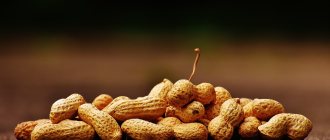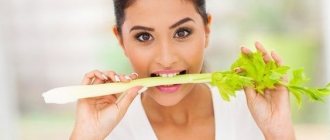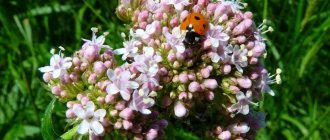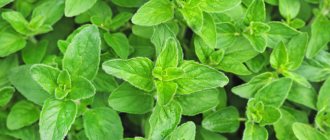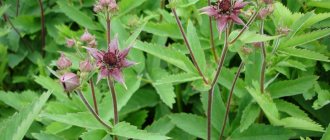Common cucumber or Cucumber (lat. Cucumis sativus) is a vegetable crop, a species of the genus Cucumber (lat. Cucumis) of the Pumpkin family (lat. Cucurbitaceae). The plant is native to the subtropical and tropical regions of India, where it was cultivated more than 6 thousand years ago. The world leaders in production are: China, Turkey, Iran, Russia, Ukraine, Spain, the United States of America, Mexico, Egypt, Uzbekistan.
Interesting fact. In the 16th century, the so-called black ukha was widespread in Russia - a soup in which fish was boiled in cucumber brine with the addition of various herbs and spices.
Chemical composition of fresh cucumbers
Fruits of medium ripeness consist of 97% water and fiber. The remaining 3% is nutrients and chlorophyll. There are almost no proteins, carbohydrates and fats in vegetables, but the content of magnesium, potassium, calcium, phosphorus is high - this is the main thing that fresh cucumber is good for the body.
Cucumbers, cut into rings
There is especially a lot of silicon in fruits. Just 100 grams of pulp contain 177% of the daily requirement of this element, which is necessary for the formation of collagen. The benefits of fresh cucumbers for the human body are largely due to their high content. It is he who is responsible for the good condition of hair, nails, and skin.
Of the vitamins, the most abundant are ascorbic acid and vitamin K. Group B vitamins, vitamins A and E are present in small amounts. Of the microelements, the most important are:
- iron,
- copper,
- cobalt,
- chromium,
- zinc,
- selenium.
Cultivation
Today, cucumbers are cultivated in two ways: seedlings and seeds.
In the first case, the harvest is harvested in early June, and in the second - in mid-July. Growing cucumbers using the seedling method:
The first stage of pre-sowing preparation begins with warming up. To do this, full-sized bones are kept for 4 hours in the oven at a temperature of 45 degrees (with constant stirring). Cucumber seeds can be heated using a simpler method by hanging them in gauze bags near heating devices (1.5 months before sowing). After this, the raw materials are placed for an hour in a solution of potassium permanganate or garlic pulp (diluted 1:3). Then the disinfected seeds are placed in cotton bags and dipped in a nutrient mixture (of nitrophoska, wood ash and water). After 12 hours, the bones are washed with clean water and placed on a slightly damp cloth to swell (for 1-2 days). At the same time, it is important to ensure that they do not germinate, but only slightly “hatch”. After this, the planting material is placed in the refrigerator for a day.
Remember, hybrid varieties of cucumbers do not require pre-sowing treatment.
To moisten the soil, crops can be sprayed with a spray bottle. If it is necessary to slow down the growth of the seedling, the intensity of watering is halved.
What are the benefits of fresh cucumbers for the human body?
The appetizing appearance of green fruits improves the functioning of the digestive glands. This promotes the absorption of fats, protein, and microelements. Vegetables are poor in nitrogenous substances, so they quickly remove accumulated metabolic products.
Which cucumbers are healthier? Fresh!
The high water and fiber content enhances intestinal motility, having a laxative effect. Vegetables gently cleanse the intestines and regulate metabolism. Ascorbic acid, which is most abundant in the peel, strengthens the immune system, and copper is responsible for youthful skin. All this determines the beneficial properties of cucumbers for the human body.
Eating vegetables has a positive effect on the functioning of the heart, kidneys, and blood vessels. This is due to potassium, which increases diuresis, as well as magnesium, which reduces blood pressure and is a good prevention of cardiovascular diseases.
It is better not to peel off the green skin. It contains the main supply of nutrients.
The product goes well with almost any unsweetened food. Whether cucumbers are healthy depends on the growing conditions. A contraindication may be exacerbation of stomach ulcers and other diseases of the gastrointestinal tract. In addition, do not forget about the relationship between quantity and quality, observing moderation in everything.
Which cucumbers are healthier?
Cucumbers can be fresh, lightly salted and pickled. For health improvement, young fresh fruits are of greatest value. The benefits and harms of lightly salted cucumbers are a separate matter, but pickled cucumbers are far from the healthiest food. They are high in sodium, which is bad for the kidneys and heart.
Fresh juicy fruits can be eaten whole or chopped. Grated or pureed vegetables are healthier for the stomach. In this form, they are better absorbed and irritate the stomach walls less.
The benefits of cucumbers for a woman’s body
To maintain health, it is important to know how fresh cucumbers are beneficial for women and to correctly introduce the product into the diet on a regular basis. Fruits help improve metabolism, but do not create preconditions for weight gain.
Cucumbers are the best remedy for the skin around the eyes
They moisturize the skin well, remove toxins, and facilitate kidney function. Due to this, the intestines are cleansed and well-being improves. In addition, fresh fruits have other valuable properties:
- reduce blood sugar levels,
- removes bad cholesterol,
- neutralizes high acidity,
- support kidney health,
- help normalize heart rate,
- reduce swelling.
The benefits of cucumbers are especially great for women who are expecting a child. Vegetables strengthen the immune system, replenish the deficiency of biologically active substances, and prevent constipation.
Botanical description
Cucumber is the oldest plant known to mankind since ancient times. The vegetable is native to Western India, from where it has spread throughout the world. This is one of the few crops consumed by humans in their unripe form. Due to this feature, the plant was nicknamed “aguros”, which translated from Greek means “unripe”.
Cucumbers are characterized by a taproot with a large number of lateral shoots. The stem of young seedlings is smooth, erect, while those of flowering and fruiting ones are rough, creeping, ending in branched tendrils (for climbing vertical supports). Moreover, the central shoot of the plant forms many lateral vines, from which vines of the second, third and fourth orders extend. At the same time, the number of secondary offspring depends on the variety of cucumbers and the growing conditions of the crop. The length of the main stem varies from 1 to 3 m, and the lateral branches from 0.3 to 0.8 m. The leaves of the vegetable are petiolate, heart-shaped, alternately located on creeping vines. As the stem grows, yellow funnel-shaped flowers with jagged edges form in the axils of the rudimentary plates. The stamens of cucumbers are fused in pairs, and the ovary, protruding, is pubescent along its entire length. The buds contain special glands that release fragrant nectar into the air.
Fresh cucumbers: benefits and harms for weight loss
Low calorie content makes the product suitable for fasting days. This is a good addition to a low-calorie diet. Fruits are actively included in dietary menus. Like other vegetables, the product is seasonal and brings the greatest benefit during the period of natural ripening in the garden beds.
How are cucumbers good for weight loss?
Vegetables are known for their cleansing and also mild laxative effects that do not cause discomfort. Low-calorie fruits satisfy hunger well. They remove harmful substances that have accumulated for a long time.
To lose extra pounds faster, you should not overuse salt. It is limited to 5 grams per day. The most noticeable results will be if you diversify the menu with protein foods, citrus fruits, low-fat, and even better, lactose-free kefir.
For the diet, choose young, tender fruits with small seeds. They are added to salads, okroshka, and combined with cabbage or other vegetables. Detox drinks are prepared from them: juices, fresh juices, smoothies.
Fasting day on cucumbers
The easiest way to feel the rejuvenating properties of vegetables is to have a cucumber fasting day for weight loss. To do this, take one and a half kilograms of the product, divide it into 5 equal parts, which are eaten during the day, preferably without salt.
This is the basis of the daily diet, which can include a couple of eggs, half a pack of low-fat cottage cheese or a piece of boiled beef. In the summer, it is recommended to do such a fasting day on cucumbers once a week, the results of which will immediately be reflected on the scale.
What harm could there be?
Usually the product does not cause allergies or other negative reactions, but even it can cause an unpleasant surprise. Consequences may occur if you exceed the reasonable norm, which is 2 kg per day. Contraindications: liver and kidney diseases in the acute phase, as well as gastritis, ulcers, colitis, diarrhea.
Smooth or with bumps?
Some cucumbers are smooth and long, while others are small and have pimples (the southern ones usually have black spines, while the northern ones usually have white ones). Such a different appearance is due to the method of reproduction. Smooth cucumbers are self-pollinating plants (panthenocarpics), and bees work on pimply ones. It is believed that for salads it is better to choose the former (they are called salad), and for pickling and marinade – the latter. However, this is a matter of taste; the main thing is that the cucumber is strong, juicy, tasty and aromatic. It’s bad when the pimples are knocked down, the skin is damaged, and the fruit is curved and contains voids and bridges. The peel of a good cucumber should be tender, and the seeds should be underdeveloped and soft. If the vegetable has become overripe, it will taste bitter, because old fruits secrete a special substance, cucurpitacin. By the way, it can also appear if the growth of the cucumber is disrupted - for example, after hot weather comes rainy and cold. In general, the younger and juicier the fruit, the better. For pickling, pickles and gherkins 3-7 cm long are considered ideal, and for eating - even greens that have not crossed the 12 cm line.
Cucumbers in cosmetology
Procedures using the popular vegetable will relieve fatigue, dark circles under the eyes, and oily shine. They are available, safe, and slow down aging. The easiest way is to simply wipe your face with a cut cucumber. Its juice is quickly absorbed. It does not leave any unpleasant sensations and does not require rinsing.
It is better to take vegetables from the refrigerator. When cooled, it tones the skin better.
Cucumber on the eyes: benefits
Many people know about the beneficial effects of cucumber applications on the skin around the eyes. Thin green rings refresh the look, moisturize the skin, and whiten. The procedure eliminates dark circles and does not cause allergies.
Cucumbers for the skin around the eyes are an ideal, time-tested remedy. Making a refreshing application is not difficult: just put fresh circles on your closed eyelids. How long to keep them in front of your eyes depends on the task at hand. Most often, 10-15 minutes is enough.
This is how long a face mask lasts, which is applied to the face without affecting the area around the eyes. This is what needs to be covered with cucumber slices so as not to waste time. When the surface heats up or dries, the slices can be turned over or replaced with new ones.
Cucumber mask for mature skin
Take the crushed pulp, add sugar-free yogurt, mix in equal proportions. The composition is applied to a cleansed face and left for half an hour. After this time, the mixture is washed off with warm water and the skin is lubricated with cream. A fresh cucumber and yogurt mask is suitable for dry skin. It soothes, relieves peeling, and prevents the formation of crow's feet.
Rejuvenating Ice
Cucumber ice for face
To prepare cosmetic ice cubes, you need to squeeze the juice from 2-3 medium-sized vegetables, mix in equal proportions with still mineral water, pour into a mold, and then freeze. Rub your face with pieces of ice for 1-2 minutes. The procedure tightens pores, improves skin tone, and slows down aging.
Cucumber mask for acne
The easiest way is to cut the fruit into slices, wipe your face and leave it on the skin to dry. With regular use, this treatment helps cleanse the face of blackheads, maintain skin elasticity, and eliminate freckles and age spots.
Another option is a classic cucumber face mask for acne. To prepare it, grind one fruit into a pulp, add a teaspoon of sour cream, and mix. The mixture is applied to the face, neck, and décolleté area. Keep the mask on for 20 minutes, rinse off, wipe the skin with a soft towel, and apply cream.
Refreshing soup
In many countries, cold summer soups are made from fresh cucumbers and fermented milk drinks. In Iran, the vegetable, cut into pieces, is poured with local kefir, seasoned with salt, pepper and plenty of herbs - cilantro, parsley, dill and mint and served on hot days with freshly baked flatbreads.
In Spain and Italy, in the summer heat, they also save themselves with cucumbers and make green gazpacho based on them. This is one of the varieties of traditional tomato soup. To prepare it, you need to grind peeled cucumbers, green bell peppers, dill and white bread crumbs in a blender. Then add a little lemon juice, olive oil, low-fat sour cream, salt and pepper to the soup. Cool green gazpacho goes perfectly with shrimp, so you can pour it into a plate and top it with fried seafood.
Contraindications
Despite its beneficial qualities, this product still has contraindications. Who is contraindicated for cucumber? The composition of the product is such that it primarily acts as a powerful cleanser. This is contraindicated for people:
- With kidney failure.
- With acute hepatitis.
- With exacerbation of gastritis, colitis.
- For dyskinesia of the biliary tract during an exacerbation.
If you have an individual intolerance, cucumber is also contraindicated. The chemical composition of this product may cause allergic reactions.

